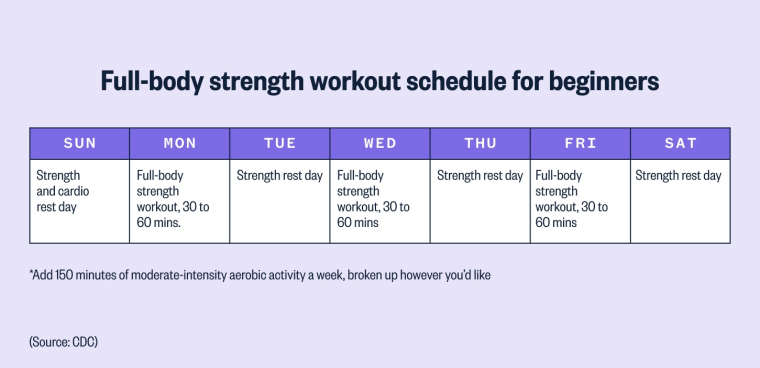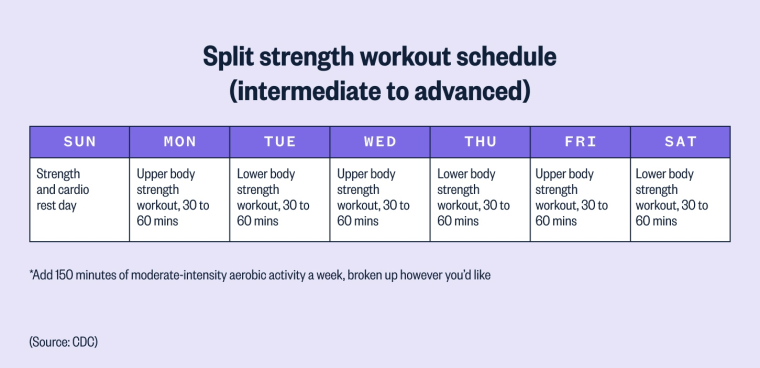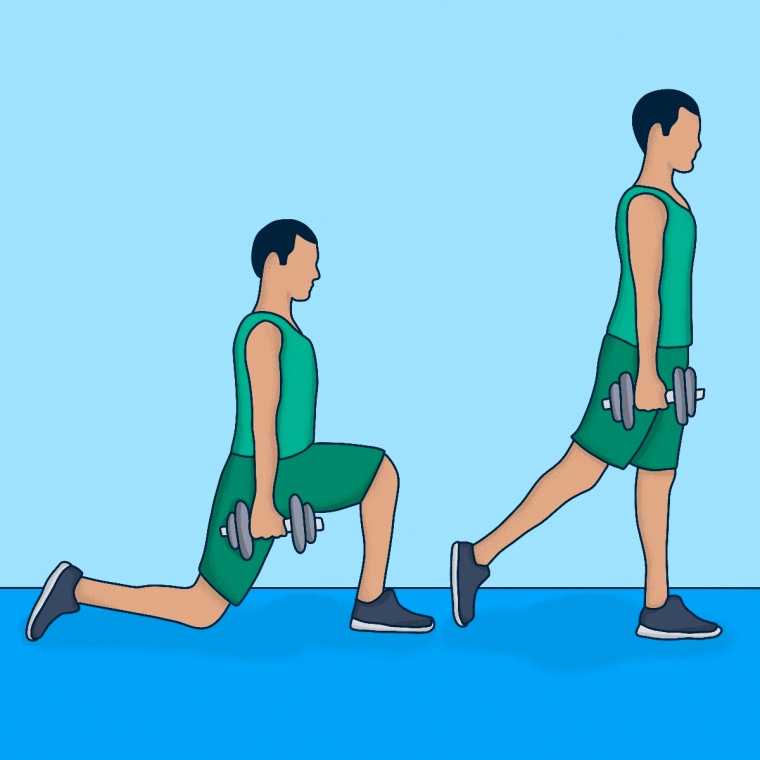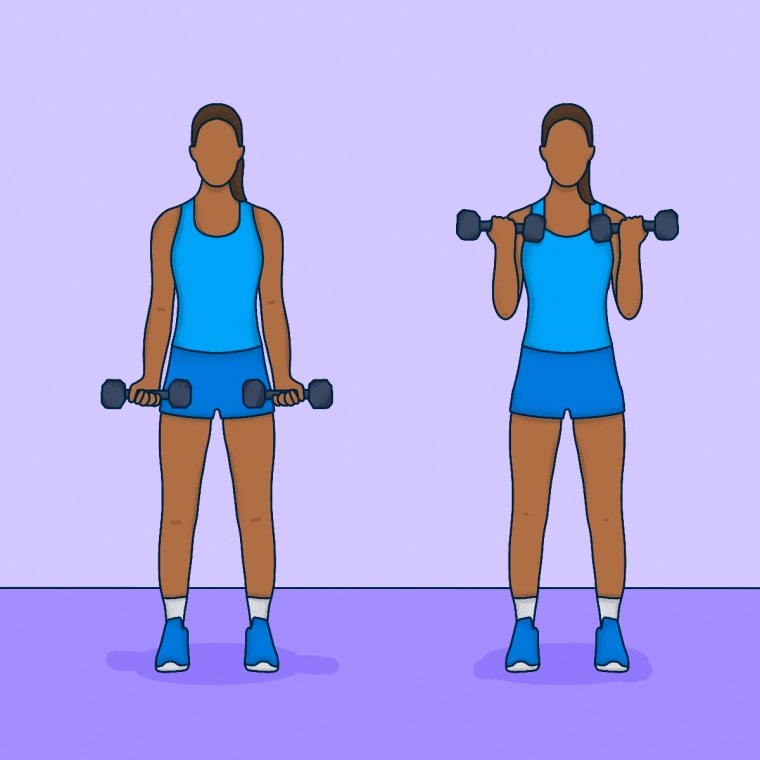The Best At-Home Dumbbell Workout For Beginners
Strength Training at Home: A Beginner’s Guide to Building Muscle and Boosting Health
Strength training at home for beginners is an effective way to build muscle, boost health, and stay fit—all without needing expensive gym memberships. In this guide, we’ll explore simple exercises, tools, and tips to help you get started today!
No matter your age, fitness level, or goals, strength training is one of the most effective exercises to build and tone muscle, improve bone density, enhance mobility, and feel stronger in daily activities. Kollins Ezekh, a certified personal trainer, boxing coach, and owner of Members Only Boxing and Fitness in Los Angeles, explains the wide-ranging benefits of strength training. The best part? You don’t need to leave home to get started. By investing in a set of quality dumbbells and mastering a few basic exercises, you can easily create a strength training routine that evolves as your fitness improves.
To help you begin your strength training journey, I reached out to personal trainers to get tips on how to start a dumbbell workout at home for beginners. I’ve also compiled the essential exercise equipment you’ll need and broke down the foundational movements recommended by fitness experts. Whether at home or in the gym, this advice can help you build a sustainable and effective fitness routine.
Step 1: Structure Your Workout
Before lifting dumbbells, consider how you will structure your workout routine. Here’s some expert advice for planning your strength training routine.
Top Exercises for Strength Training at Home
According to the Centers for Disease Control and Prevention (CDC), most healthy adults should aim to strength train twice a week. For noticeable progress and muscle growth, aim for at least three sessions per week. Certified personal trainer Jen Polzak emphasizes the importance of repetition: “Our muscles need to be overloaded enough to break down and rebuild, which is how we get stronger,” she explains. “Without this adaptation, you won’t see muscle growth.”
Rest days are equally crucial for muscle recovery. Certified trainer McKay Romney recommends training three times a week with at least one day of rest between sessions for optimal results.
However, if you can only commit to one session a week at first, it’s a great start. Progressing gradually and focusing on consistency will lead to better results. Eventually, if you aim to increase muscle mass, you can raise your training frequency to 4-6 times per week, but make sure to build up slowly to avoid injury.
Don’t Forget Cardio
In addition to strength training, cardiovascular exercise is vital for heart health, weight management, and reducing the risk of certain diseases. Ezekh advises doing cardio on non-strength training days, or pairing cardio and strength workouts on the same day. If you choose the latter, he suggests warming up with cardio before strength training to prepare your muscles.
The CDC recommends at least 150 minutes of moderate-intensity aerobic activity each week (like walking), or 75 minutes of vigorous-intensity exercise (like running or swimming), or a combination of both.
For more health tips and information on fitness and wellness, check out the Health category on USACentralNews.

How Long Should Strength Training Sessions Be?
According to experts, the ideal strength training session typically lasts between 30 and 60 minutes. This time frame allows for a proper warmup, effective strength training, and a cool down to help your muscles recover.
Interestingly, longer strength training sessions aren’t necessarily more effective. In fact, research suggests that the most significant benefits occur within the first hour of exercise. After that, the benefits are minimal, according to certified trainer McKay Romney. Overextending your workout can potentially hinder your recovery and preparedness for future sessions, as your muscles are already being pushed to their maximum limit during the workout.
Full-Body or Split Workouts: Which is Best for You?
The decision between full-body and split workouts depends on your personal preference and fitness goals. For beginners using dumbbells three times a week, trainer McKay Romney recommends full-body workouts. This approach ensures you engage all muscle groups, which is vital for overall strength and muscle growth. “It’s better to stimulate a muscle a couple of times a week than to exhaust it completely once a week,” Romney explains.
As you progress to more frequent strength training (more than three times a week) with fewer rest days, you may consider split workouts. These target different muscle groups each day, allowing time for recovery between sessions. For instance, you could focus on your upper body twice a week and your lower body twice a week. At this stage, seeking guidance from a certified personal trainer can help you refine your routine based on your goals.

Step 2: Make Sure You Have the Right Equipment
Once you know your workout structure, gather all the equipment you’ll need to exercise, including supportive clothing and footwear. The products below are from brands that experts or I recommend. I also added a few highly rated items that meet personal trainers’ shopping guidance.
Dumbbells
Dumbbells are among the best types of weights to keep at home due to their versatility. You can use them for a variety of exercises at different difficulty levels, and they don’t take up much storage space. Romney recommends getting a rack to keep them organized, or you can stack them up in a closet, store them under a bed, or line them up along a wall.
There are two types of dumbbells: fixed, which have one set weight, and adjustable, which let you choose your weight using a rotating dial or removable pin. Romney suggests adjustable dumbbells for at-home workouts because they provide a range of weights in the same amount of space. However, adjustable dumbbells can be pricey, so some people prefer buying a few pairs of lower-priced static dumbbells. You don’t always need to use heavier weights to build strength. Polzak explains that before going heavier, you can do more sets or repetitions, increase time under tension with the tempo of an exercise, or hold the weight farther from your midline to engage more muscle. Learn more about how to choose the right weight for your body in the FAQ section below.
Other Helpful Equipment
While weights are the most important, several accessories can enhance your workout. Resistance bands and sliders can add difficulty to exercises, says Polzak. Using an adjustable bench or an inflatable ball can support your body in specific positions, according to Romney. He also recommends covering the floor with a rubber mat to protect it from damage. A yoga mat works well if you already own one, and specialized rubber flooring is available if you want to dedicate an area of your home as a gym.
Protective Gear
Regular dumbbell use can lead to calluses on your palms and thicker skin around your knuckles, says Romney. Weightlifting gloves can help prevent rough skin and make lifting more comfortable. As you progress and lift heavier weights, investing in lifting straps may also be beneficial, as they help you hold onto the weights when your forearms are fatigued.
Clothing and Footwear
Your shoes are the most important part of your outfit while using dumbbells. Wear training shoes with a flat base to help you grip the floor, stabilize, and distribute your weight evenly across both feet, according to Ezekh. Never use dumbbells while barefoot or just wearing socks — dropping one on uncovered toes can cause injury.
For clothing, choose leggings, shorts, shirts, or other comfortable, non-restrictive pieces, says Polzak.
Step 3: Do the Workout
Your workout should consist of three parts: a warmup, weightlifting, and a cool down. Weightlifting is the main part of your session, while the warmup prepares your body and mind for exercise. The cool down begins your recovery phase, says Polzak.
Warmup
The goal of a warmup is to get your blood pumping and prepare your muscles for the workout, says Ezekh. A dynamic warmup, which engages your muscles through movement, is ideal. Examples include jumping jacks, leg swings, and arm circles. You can also add some cardio with activities like walking or using an elliptical machine, stairmaster, or rowing machine. Using a foam roller or a massage gun can also help prepare your muscles.
Weightlifting
There are three ways to organize a weightlifting session, says Polzak. All of these are effective, so you can choose the one that works best for you or incorporate each throughout the week.
- Supersets: Alternate between two different exercises back-to-back with little to no rest in between.
- Circuits: Perform a sequence of three or more exercises in a row with minimal rest in between. Repeat the sequence two or three times.
- Straight sets: Perform three sets of an exercise with a short rest period between them before moving on to another exercise.
For effective strength training, the American College of Sports Medicine recommends doing two to three sets of eight to 12 repetitions of each exercise. Some exercises are compound movements, involving multiple muscle groups — squats, deadlifts, and overhead presses are examples. Others are isolation exercises, targeting one muscle group at a time, like bicep curls or tricep kickbacks. Compound movements are generally more efficient, so it’s a good idea to prioritize them and save isolation exercises for later in your session if you’re focusing on specific areas.
To learn more about foundational strength training exercises, experts recommend working with a personal trainer, either virtually or in-person, watching instructional videos, or using fitness apps. Below is an example of a superset to help you understand how it works.

The Dumbbell Kneel to Stand is an effective exercise that targets the quadriceps, glutes, and core muscles, enhancing lower body strength and stability. Here’s how to perform it:
- Starting Position: Kneel on the floor with both knees bent at 90 degrees. Place your front foot flat on the ground and position your back foot on its toes. Hold a dumbbell in each hand by your sides.
- Engage Core: Draw your navel toward your spine to activate your core muscles.
- Stand Up: Press through your front foot and back toes to lift your body into a standing position, bringing your back foot forward to meet the front foot.
- Return to Kneeling: Step your back foot back and lower your body to return to the starting kneeling position.
- Repeat: Perform the desired number of repetitions, then switch legs.
Biceps curls

From a seated or standing position, hold your dumbbells at your sides. Gently squeeze your glutes and pull your abdomen towards your spine. Exhale as you bend your elbows to lift the dumbbells toward your chest, keeping your elbows at your sides. Inhale as you lower the dumbbells to the starting position. Repeat.
Cool down
After using weights, do a static cool down for 5 to 10 minutes, which involves stretching without movement, says Romney. Focus on stretching the parts of your body you targeted with your weight work, like chest and shoulder stretches for the upper body, and hamstring, calf and hip stretches for the lower body. Hold each stretch for about 20 to 30 seconds before moving on to a new one, says Ezekh.
Meet our experts
At NBC Select, we work with experts with specialized knowledge and authority based on relevant training and/or experience. We also ensure that all expert advice and recommendations are made independently and without undisclosed financial conflicts of interest.
- Kollins Ezekh is a certified personal trainer, boxing coach and owner of Members Only Boxing and Fitness in Los Angeles, California.
- Jen Polzak is a certified personal trainer and the director of membership and fitness at Asphalt Green in New York City.
- McKay Romney is a certified personal trainer and nutritionist based in Salt Lake City, Utah.



Leave a Reply